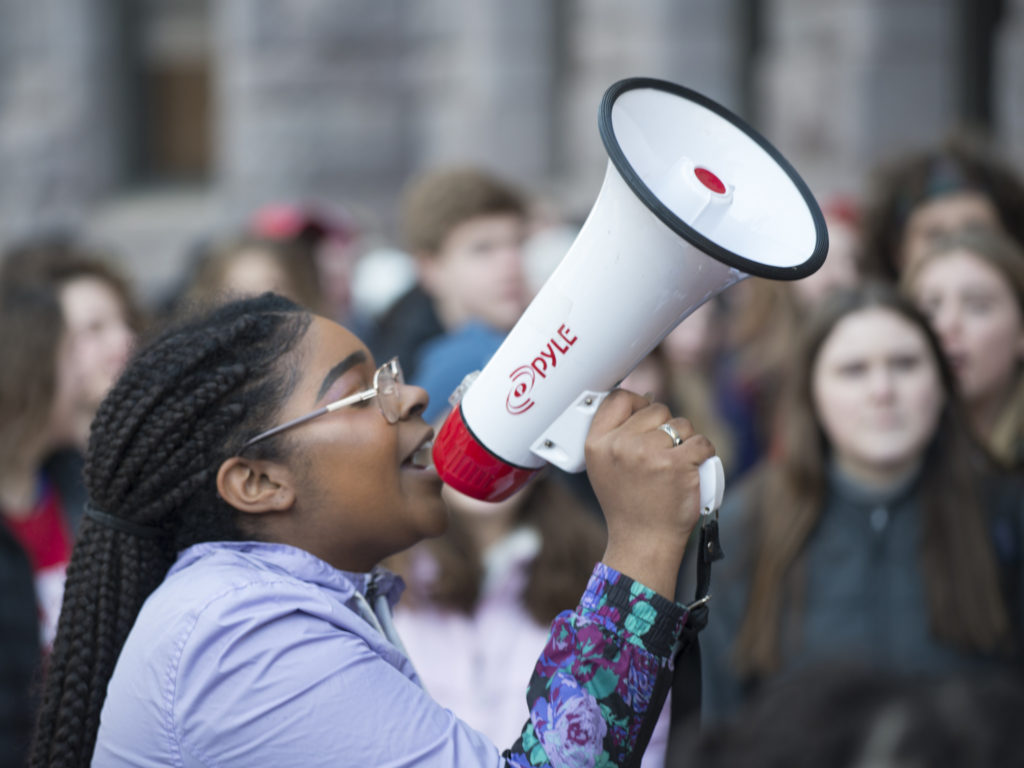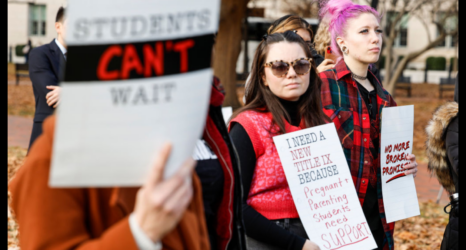As the parent of a high school sexual assault survivor, I’ve seen how pervasive sexual harassment and assault in our K-12 schools can shake entire communities. That’s why I’m sounding the alarm about the Trump administration’s attempt to roll back Title IX guidelines for sexual misconduct.

National surveys show that most students will experience some form of sexual harassment during their elementary and secondary school years—yet most K-12 schools are not well-prepared to respond appropriately when they learn that a student has sexually harassed or assaulted a peer, or that a teacher sexually abused a student. The Department of Education’s proposed changes to Title IX regulations will only make the problem worse, increasing barriers for students and families reporting sexual harassment and confuse school officials who already lack clear guidance on how to respond appropriately.
Until now, the Department followed court precedence—defining sexual harassment as “unwelcome conduct of a sexual nature.” Education Secretary Betsy DeVos’ proposed changes, however, require schools to take action only when harassment is “so severe, pervasive and objectively offensive” that it denies a student access to the school’s educational program. (No guidance was offered as to what “severe” and “objectively offensive” harassment looks like in elementary, middle or high school.)
These new rules would force school districts to navigate competing definitions of sexual harassment from state law and existing district policies and complicate schools’ efforts to respond promptly and effectively to student complaints. This doesn’t just create obstacles for students and parents who want schools to take immediate action to remedy harassment—it allows schools to disregard sexual harassment complaints until they escalate to a subjective threshold, effectively empowering them to sweep inconvenient cases of harassment and assault under the rug indefinitely.
The proposed regulations also require schools to have “actual knowledge” of peer sexual harassment—meaning that misconduct must be reported to a Title IX Coordinator, teacher or unspecified school official who can take “corrective action.” That means that if a middle school student told a coach or school nurse that they were sexually assaulted by a peer, their administration would not be required to take Title IX action, because the “right” person wasn’t notified. Teachers would also have no authority to address a student’s report of sexual harassment by another teacher.
The new rules also reverse previous guidance that required schools to address the effects of off-campus sexual assault or cyber sexual harassment if and when they interfere with a student’s opportunity to an equal education—meaning that even if a student sexually assaulted by a peer at a friend’s house sees their assailant every day at school and endures taunts and threats from the perpetrator’s friends in person or electronically, the school could disregard the sexual harassment complaint because it didn’t take place on school grounds.
This creates potential complications in jurisdictions where all school staff are mandatory reporters. In these schools, the coach or nurse must notify either law enforcement or child welfare agency of possible child abuse, creating scenarios where the school does not officially recognize that sexual assault occurred, even while public safety organizations are put on notice of possible child endangerment.
Many K-12 students and parents complain that when they inform school officials about sexual harassment or assault, there’s no immediate response or action taken. Whereas previous guidance from the Department of Education recommended that schools complete their Title IX investigations within 60 days, the Trump administration’s new rules mandate only that such investigations be “reasonably prompt” and permit schools to postpone investigations until completion of “law enforcement activity,” which might extend for months. Meanwhile, as schools take no action, students reporting sexual harassment might continue to experience retaliation and other forms of revictimization that prevent them from keeping up academically and participating in school activities.
Although previous guidance considered mediation inappropriate, because it would likely retraumatize the reporting student, the Trump administration’s proposed Title IX changes would permit K-12 schools to resolve formal sexual harassment and assault complaints through alternative resolution procedures. Under the new rules, school officials could pressure a reporting student in elementary school to agree to an informal resolution, allowing a district to forgo its duty to conduct a Title IX investigation, and obligatory mediation could frighten young students from reporting sexual harassment by peers and school staff.
The Department of Education has attempted to justify these proposed changes to Title IX as clarifying regulations and saving schools money spent investigating complaints—insinuating that it is too burdensome and costly for schools to ensure students’ civil rights to an education free from sex discrimination, and that the solution is to make it easier for schools to deny and delay responding effectively. Yet even that excuse falls short. It’s not clear at all how much the proposed regulations would offer regulatory relief or cost savings, and schools would wrestle with untangling the new Title IX rules from state non-discrimination laws and existing district policies—which, for the most part are consistent with previous Title IX guidance. In the end, schools could still be sued for violating state non-discrimination statutes and tort laws.
Betsy DeVos and the Trump administration are taking precisely the wrong approach. The solution to K-12 schools mishandling sexual harassment complaints isn’t regulatory, but educational. The Department should offer school districts training and technical assistance, amplifying its 2001 guidance which addressed due process, freedom of speech, confidentiality and proactive measures as they apply to Title IX. Instead, they’re bailing administrators out of their responsibility to keep students safe in school.
It’s imperative that all school staff have training on fair and effective Title IX guidance so we can stop the cycle of sexual harassment and violence—in K-12 schools, colleges, the workplace and beyond.
The Department of Education’s comment period on the proposed Title IX regulations is open through January 28. Click here to learn more and speak up for survivors.





